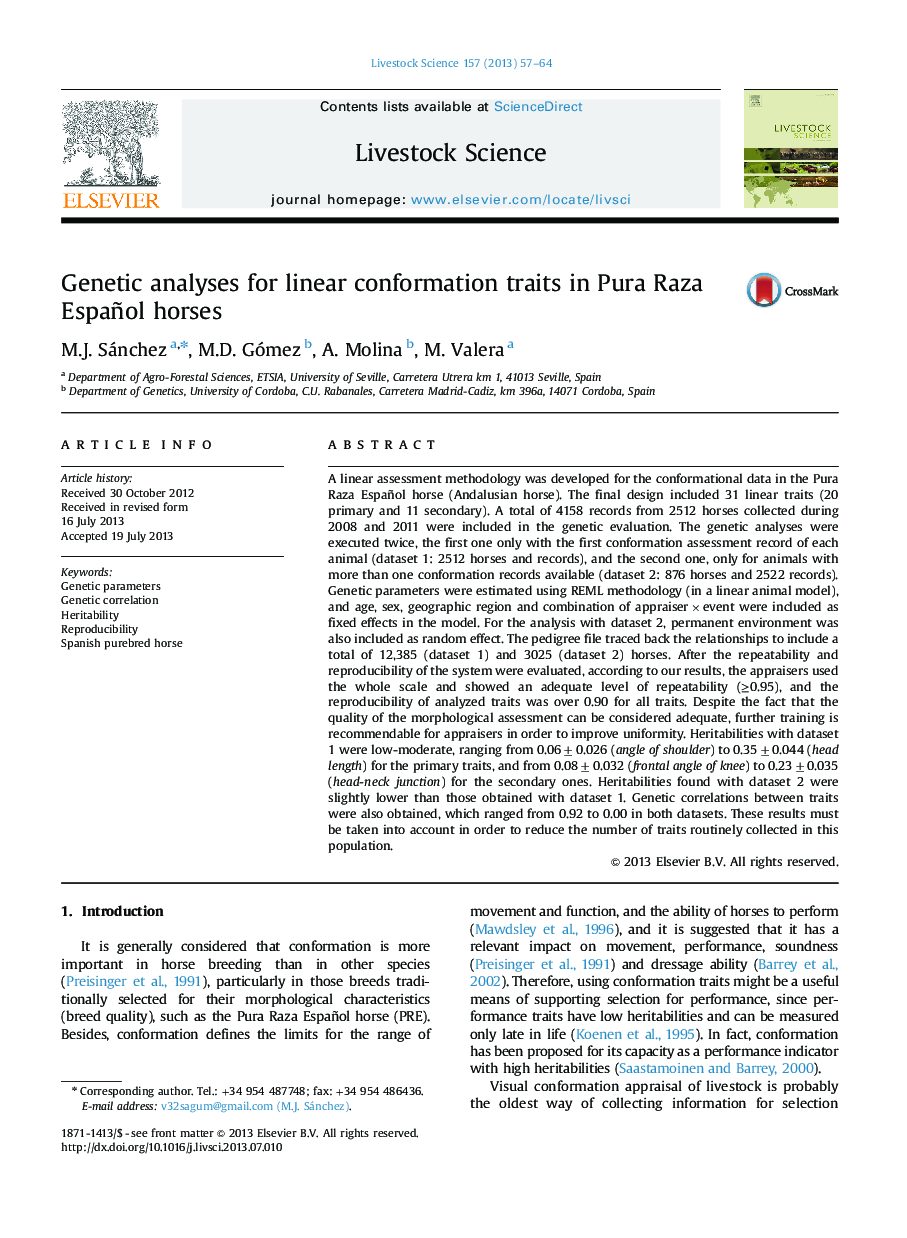| Article ID | Journal | Published Year | Pages | File Type |
|---|---|---|---|---|
| 5790347 | Livestock Science | 2013 | 8 Pages |
Abstract
A linear assessment methodology was developed for the conformational data in the Pura Raza Español horse (Andalusian horse). The final design included 31 linear traits (20 primary and 11 secondary). A total of 4158 records from 2512 horses collected during 2008 and 2011 were included in the genetic evaluation. The genetic analyses were executed twice, the first one only with the first conformation assessment record of each animal (dataset 1: 2512 horses and records), and the second one, only for animals with more than one conformation records available (dataset 2: 876 horses and 2522 records). Genetic parameters were estimated using REML methodology (in a linear animal model), and age, sex, geographic region and combination of appraiserÃevent were included as fixed effects in the model. For the analysis with dataset 2, permanent environment was also included as random effect. The pedigree file traced back the relationships to include a total of 12,385 (dataset 1) and 3025 (dataset 2) horses. After the repeatability and reproducibility of the system were evaluated, according to our results, the appraisers used the whole scale and showed an adequate level of repeatability (â¥0.95), and the reproducibility of analyzed traits was over 0.90 for all traits. Despite the fact that the quality of the morphological assessment can be considered adequate, further training is recommendable for appraisers in order to improve uniformity. Heritabilities with dataset 1 were low-moderate, ranging from 0.06±0.026 (angle of shoulder) to 0.35±0.044 (head length) for the primary traits, and from 0.08±0.032 (frontal angle of knee) to 0.23±0.035 (head-neck junction) for the secondary ones. Heritabilities found with dataset 2 were slightly lower than those obtained with dataset 1. Genetic correlations between traits were also obtained, which ranged from 0.92 to 0.00 in both datasets. These results must be taken into account in order to reduce the number of traits routinely collected in this population.
Related Topics
Life Sciences
Agricultural and Biological Sciences
Animal Science and Zoology
Authors
M.J. Sánchez, M.D. Gómez, A. Molina, M. Valera,
